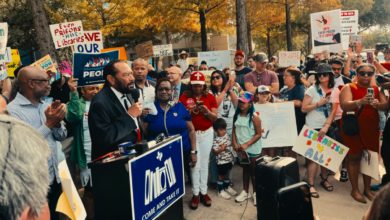The capitalist class’s attack on working people is affecting many facets of people’s lives. College tuition is emerging as another front in the ongoing class war.
Earlier this month, the National Center for Public Policy and Higher Education, released a report that gave 43 U.S.
|
Throughout most of American history, higher education has been reserved for the rich. It has been one of the primary ways to maintain class privileges and extend them to future generations. Ruling-class kids have been able to pay their way into college. They have the connections for easy admission. They have the money to pay for tuition, books and housing.
It has been more difficult for working-class people A small but steady stream of working-class students received scholarships and admission to America’s colleges. But college wasn’t widely available to all sectors until the 1960s and 70s.
Radical agitation by students from working class and oppressed backgrounds forced concessions and paved the way for many more students to enter schools. Tuitions were lowered; affirmative action was adopted; and federal college preparatory programs were offered, like Upward Bound, Talent Search, and Special Services for Disadvantaged Students.
These programs were all designed to help the children from working-class families gain access to the educational opportunities typically denied them.
Initially, great strides were made. But soon affirmative action was attacked by reactionary ruling class forces and funding for other programs diminished. As early as 1978 in the Regents of the University of California v. Bakke Supreme Court case, admission quotas based on race were outlawed. Attacks on other progressive education initiatives have followed.
Now, with education costs rising dramatically in nearly every state, colleges and universities are sliding back toward the days when only the very richest had the right to attend schools.
Tuition cost rising faster than income, inflation
The National Center for Public Policy and Higher Education report not only gave 43 states an “F” grade; the rest received “Ds,” except Utah and California, both of which barely got a “C” grade.
The affordability grade is based on how much of an average family’s income it costs to attend. Almost everywhere that figure is up—even accounting for financial aid.
In Ohio, public four-year colleges cost 42 percent of the average family’s paycheck, up from 28 percent in the early 1990s. In New Jersey, tuition costs have risen from 24 percent to 37 percent and in Oregon from 25 percent to 36 percent.
Indiana is another dire example. It takes 36 percent of a family’s income to attend a two-year college and 44 percent to go to a four-year college.
Even these startling figures are misleading. In analyzing the study, the New York Times reported on Sept. 6 that nationwide, “on average, a year at a public four-year university costs 31 percent of a family’s income. … But that figure hides the enormous difference between families in the bottom 20 percent of income, for which it would be 73 percent of annual income, and those in the top 20 percent, for which it would amount to only 9 percent.”
A study released in August by the Secretary of Education’s Commission on the Future of Higher Education also found that college is getting more unaffordable quickly. The study noted that the “cost per student is increasing faster than inflation or family income; need-based financial aid is not keeping pace; the student aid system provides insufficient support.”
When benefits are decreasing and the cost of living is increasing in most U.S. cities and towns, college is becoming
 |
Colleges blame higher enrollment and increased teacher salaries, among other things, for the increasing cost.
Those claims, however, ring hollow, particularly since the largest and most prestigious colleges have billion dollar endowments that make it possible for them to provide tuition at a much-discounted price.
The real problem is the lack of funding for education. Hundreds of billions are spent on imperialist war and militarism each year, while much less goes to fund education and other necessary social programs.
There is also the capitalist desire to keep college a profit-oriented industry, whether the money comes from tuition costs, from book costs or through financial aid schemes—both private and public—with their usurious loan rates.
While tuition costs increase, programs designed to help low-income children attend college, such as Upward Bound, are consistently getting their funding decreased.
Leah Puryear, director of Upward Bound at the University of Virginia for the past 26 years, recently told PSLweb.org: “Our ability to serve students is at its lowest level since I have been involved with the program. Traditionally, we have been able to get 8-10 percent increases per funding cycle; now we have been told never to expect anything more than 3 percent.”
The current situation facing students from working-class families is growing more difficult each year. The education system is ripe for thoroughgoing change.
Education is a basic human right. Students, revolutionaries and progressives must begin to raise the demand for free education at all levels. No one should be denied access to college on any basis, most certainly because they cannot afford it.







